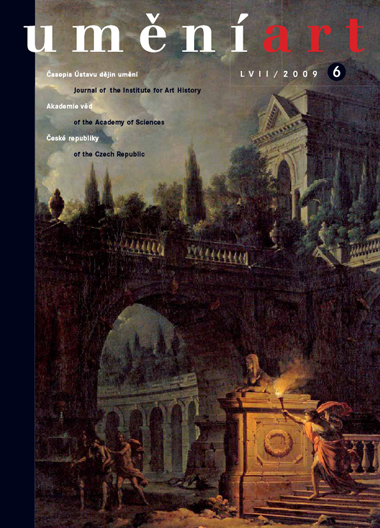Jiří Bláha
Das malerische Werk Josef Platzers
Josef Platzer (1751-1806), a Prague native, is mainly known as a scenographer. After the success of his decorations for the Nostitz Theatre (today the Estates Theatre) in Prague, he worked in the Imperial Court Theatre (Burgtheater) in Vienna. In 1789 he became a member of the Viennese Academy, in 1791 he became the court theatre painter and in 1795 the imperial court painter. His painting work - architectural capriccii with staffage, usually portraying scenes from contemporary operas or ballets - remained at the margins of interest. The article summarises the results of the author's thesis: it presents some new findings on Platzer's paintings and his prints based on the paintings; draws attention to some newly discovered works in public and private collections; and suggests a preliminary chronology of Platzer's remarkable painting works. Until the start of the 1780s Platzer mainly painted exterior architecture and landscapes with ruins, derived from Neapolitan painters of ruins and especially the compositions of Galli-Bibienas. From the mid-1780s Platzer took an interest in the night-time interiors with artificial light created by the Dutch artist Hendrick van Steenwijck, and until his death he painted his own original variations on these works, as well as night-time architecture illuminated in moonlight. He combined his Dutch models with scenographic methods and motifs and the resulting compositions appear in his decorative designs and in his paintings. The staffage in several of Platzer's paintings was painted by Heinrich Friedrich Füger (1751-1818). Some of the paintings drew their inspiration from the ballet librettos of Jean-George Noverre (e.g. Horatius Released from His Bonds) or Gasparo Angiolini (The Death of Semiramis). While in his earlier paintings Platzer worked with distinctly ahistorical architecture, in the later canvases dating from after 1800 (two versions of The Death of Cleopatra) there are signs of an attempt at an architecture that stylistically corresponds in time and space to the action pictured.
Full-text in the Digital Library of the Czech Academy of Sciences:
https://kramerius.lib.cas.cz/uuid/uuid:cc9192f2-cae8-0367-aaf0-1c62854eff6e
< back

